If we look into the StudentController, request mapping is @RequestMapping("/rest") for class and get mapping is @GetMapping("/test"). Hence for url http://localhost:8080/TestHibernate/rest/test, I should get a string 'success', which I am not getting. On executing url http://localhost:8080/TestHibernate I am getting the content placed in index file.
Please let me know what part I am missing.
Thank you.
Controller class
package com.akshay.controller;
import org.springframework.beans.factory.annotation.Autowired;
import org.springframework.web.bind.annotation.GetMapping;
import org.springframework.web.bind.annotation.PostMapping;
import org.springframework.web.bind.annotation.RequestBody;
import org.springframework.web.bind.annotation.RequestMapping;
import org.springframework.web.bind.annotation.RestController;
import com.akshay.dao.StudentDAO;
import com.akshay.entity.Student;
@RestController
@RequestMapping("/rest")
public class StudentController {
@Autowired
private StudentDAO studentDAO;
@PostMapping("/saveStudent")
public String save(@RequestBody Student student) {
studentDAO.saveStudent(student);
return "Saved Successfully";
}
@GetMapping("/test")
public String test() {
return "Success";
}
}
DAO Layer
package com.akshay.dao;
import org.hibernate.Session;
import org.hibernate.SessionFactory;
import org.springframework.beans.factory.annotation.Autowired;
import org.springframework.stereotype.Repository;
import org.springframework.transaction.annotation.Transactional;
import com.akshay.entity.Student;
@Repository
@Transactional
public class StudentDAO {
@Autowired
private SessionFactory factory;
private Session getSession() {
Session session = factory.getCurrentSession();
if(session == null) {
session = factory.openSession();
}
return session;
}
public void saveStudent(Student student) {
getSession().save(student);
}
}
Entity Layer
package com.akshay.entity;
import javax.persistence.Column;
import javax.persistence.Entity;
import javax.persistence.GeneratedValue;
import javax.persistence.GenerationType;
import javax.persistence.Id;
import javax.persistence.Table;
@Entity
@Table(name = "student")
public class Student {
@Id
@GeneratedValue(strategy = GenerationType.IDENTITY)
@Column(name = "id")
private int id;
@Column(name = "first_name")
private String firstName;
@Column(name = "last_name")
private String lastName;
@Column(name = "email")
private String email;
public Student() {
}
public Student(String firstName, String lastName, String email) {
this.firstName = firstName;
this.lastName = lastName;
this.email = email;
}
public int getId() {
return id;
}
public void setId(int id) {
this.id = id;
}
public String getFirstName() {
return firstName;
}
public void setFirstName(String firstName) {
this.firstName = firstName;
}
public String getLastName() {
return lastName;
}
public void setLastName(String lastName) {
this.lastName = lastName;
}
public String getEmail() {
return email;
}
public void setEmail(String email) {
this.email = email;
}
@Override
public String toString() {
return "Student [id=" + id + ", firstName=" + firstName + ", lastName=" + lastName + ", email=" + email + "]";
}
}
Entry Point
package com.akshay.TestHibernate;
import org.springframework.boot.SpringApplication;
import org.springframework.boot.autoconfigure.SpringBootApplication;
@SpringBootApplication
public class TestHibernateApplication {
public static void main(String[] args) {
SpringApplication.run(TestHibernateApplication.class, args);
}
}
POM file
<?xml version="1.0" encoding="UTF-8"?>
<project xmlns="http://maven.apache.org/POM/4.0.0"
xmlns:xsi="http://www.w3.org/2001/XMLSchema-instance"
xsi:schemaLocation="http://maven.apache.org/POM/4.0.0 https://maven.apache.org/xsd/maven-4.0.0.xsd">
<modelVersion>4.0.0</modelVersion>
<parent>
<groupId>org.springframework.boot</groupId>
<artifactId>spring-boot-starter-parent</artifactId>
<version>2.5.0</version>
<relativePath /> <!-- lookup parent from repository -->
</parent>
<groupId>com.akshay</groupId>
<artifactId>TestHibernate</artifactId>
<version>0.0.1-SNAPSHOT</version>
<name>TestHibernate</name>
<description>Demo project to test hibernate and mysql</description>
<properties>
<java.version>11</java.version>
</properties>
<dependencies>
<dependency>
<groupId>org.springframework.boot</groupId>
<artifactId>spring-boot-starter-data-jpa</artifactId>
</dependency>
<dependency>
<groupId>org.springframework.boot</groupId>
<artifactId>spring-boot-starter-web</artifactId>
</dependency>
<dependency>
<groupId>org.springframework.boot</groupId>
<artifactId>spring-boot-starter-tomcat</artifactId>
</dependency>
<dependency>
<groupId>javax.servlet</groupId>
<artifactId>jstl</artifactId>
</dependency>
<dependency>
<groupId>org.apache.tomcat.embed</groupId>
<artifactId>tomcat-embed-jasper</artifactId>
<!--<scope>provided</scope> -->
</dependency>
<dependency>
<groupId>org.springframework.boot</groupId>
<artifactId>spring-boot-devtools</artifactId>
<scope>runtime</scope>
<optional>true</optional>
</dependency>
<dependency>
<groupId>mysql</groupId>
<artifactId>mysql-connector-java</artifactId>
<scope>runtime</scope>
</dependency>
<dependency>
<groupId>org.springframework.boot</groupId>
<artifactId>spring-boot-starter-test</artifactId>
<scope>test</scope>
</dependency>
</dependencies>
<build>
<plugins>
<plugin>
<groupId>org.springframework.boot</groupId>
<artifactId>spring-boot-maven-plugin</artifactId>
</plugin>
</plugins>
</build>
</project>
application.properties
#
# JDBC connection properties
#
jdbc.driver=com.mysql.jdbc.Driver
jdbc.url=jdbc:mysql://localhost:3306/web_student_tracker
jdbc.user=springstudent
jdbc.password=springstudent
#
# Connection pool properties
#
connection.pool.initialPoolSize=5
connection.pool.minPoolSize=5
connection.pool.maxPoolSize=20
connection.pool.maxIdleTime=3000
#
# Hibernate properties
#
hibernate.dialect=org.hibernate.dialect.MySQLDialect
hibernate.show_sql=true
hibernate.packagesToScan=com.akshay.entity

